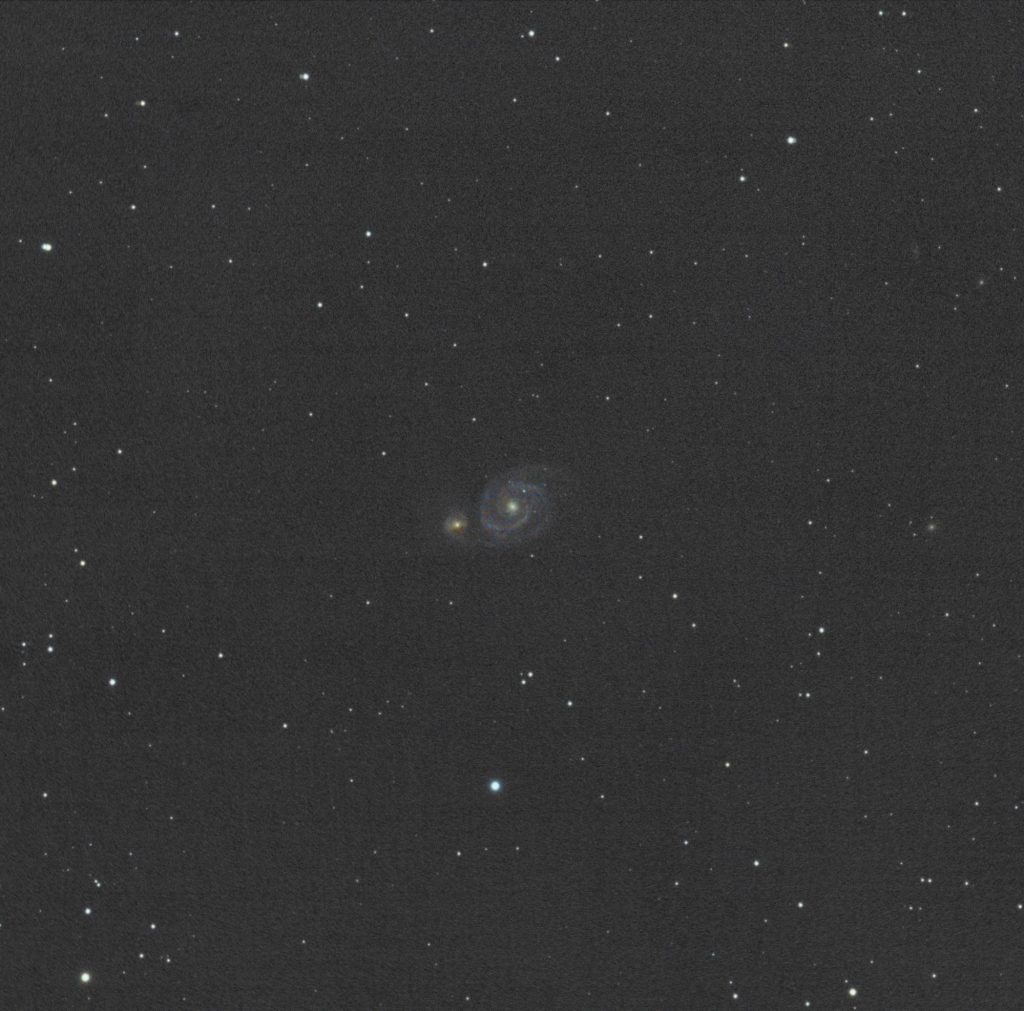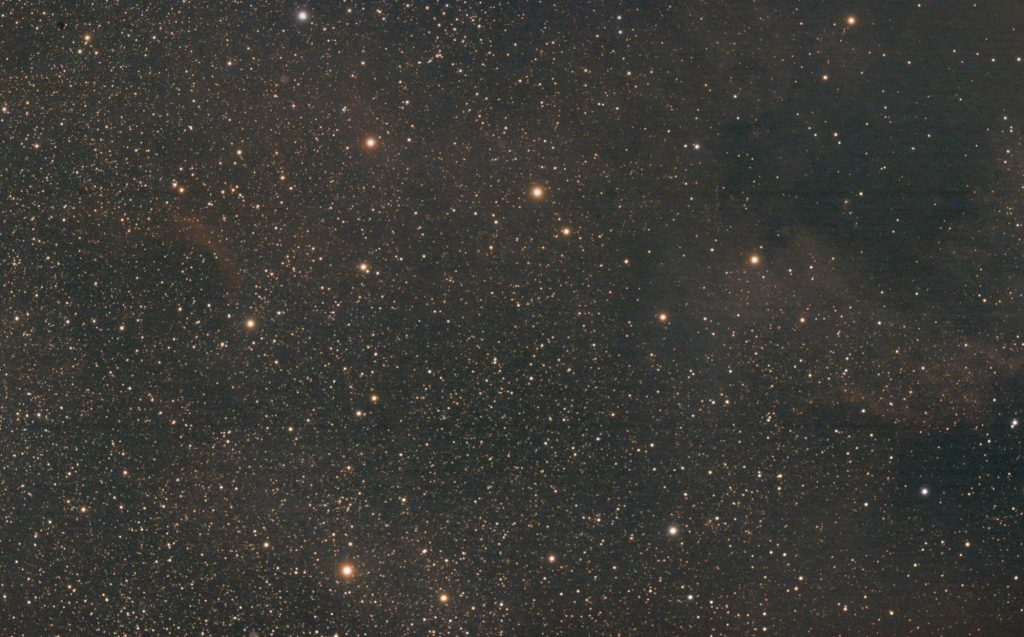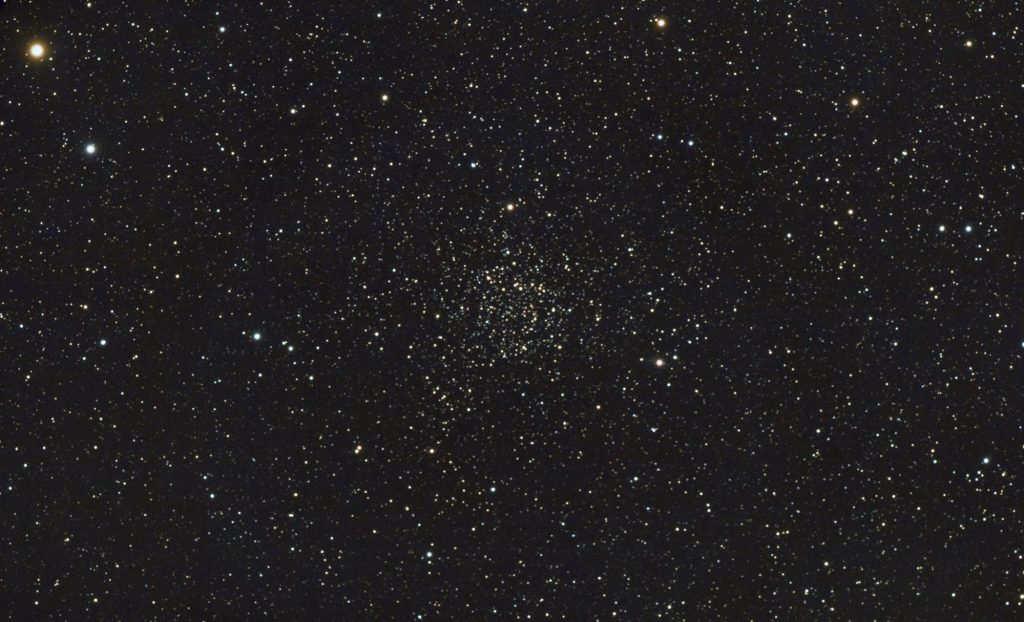Sky-Watcher’s HEQ5 Pro is one of the most recommended astrophotography mounts for beginners for good reasons. In fact, it’s the mount I started out with.
The HEQ5 became available in the United States relatively recently, but a slightly altered rebranded version has been available as the Orion Sirius EQ-G for over a decade. However, the HEQ5 Pro has the advantages of customer support for second-hand buyers should you buy the mount used or decide to resell it, comes with an extra counterweight, and sports a few other minor upgrades – in my opinion, the white/green paint job also looks better than the Orion black/red.
Technical Specs of the HEQ5 Pro
The HEQ5 Pro has a stated weight capacity of 30 pounds for visual use and 24 pounds for astrophotography. I would shave off a third of this capacity and say it’s more like 20 pounds for visual and 16 pounds for astrophotography. Anything much heavier than 20 pounds for visual is going to be shaky and put a lot of strain on the gears, and anything heavier than 16 pounds for astrophotography is going to result in poor guiding and blurry images even with relatively short exposures.
The HEQ5 Pro takes any scope with a Vixen-style dovetail on the bottom, and it comes with a short green one that you can attach to some scopes if you don’t already have one. The stock saddle is not my favorite, however, as it uses two screws that will mar the dovetail and make it a little hard to adjust balance on the declination axis. I would recommend upgrading the saddle to a nicer one if you have the funds to do so. The mount includes a DC power cord and two 11-pound counterweights.
Conveniently, the entire mount comes in one box. I was able to assemble my local astronomy club’s HEQ5 Pro (which I have been using) in about 5 minutes after opening the box.
Understanding & Using the HEQ5 Pro
The HEQ5 Pro as a Visual Mount
For visual use, the HEQ5 Pro has a number of strengths and weaknesses. Its strengths are:
- Light weight. The entire assembled HEQ5 (minus counterweights) weighs about 22 pounds/10 kilograms. This means you can easily carry the entire mount (or even the mount with a counterweight and maybe a small scope) outside in one trip.
- Ease of use. The Sky-Watcher SynScan controller is relatively user friendly, and for visual use, a one-star alignment is good enough if you are sufficiently well polar aligned.
- Portability. With a retractable counterweight shaft, the mount head is small enough to fit in luggage!
The HEQ5 Pro does have some disadvantages, however:
- Low capacity. The counterweight shaft is a little on the short side, and the mount’s tripod legs are only 1.75” in diameter. The biggest scope you would ever want to put on here is probably an 8” SCT or reflector, or a 5” refractor.
- The SynScan hand controller is a little more confusing to navigate than the Celestron NexStar+ controllers. Also, it lacks an internal clock and it asks you to confirm the location and time zone EVERY TIME you set it up.
If you’re looking for a lightweight, portable and computerised mount to carry your C8 or similar, the HEQ5 Pro is great. However, if you are looking to get the most mount capacity for your money, there are a couple of better options with more capacity.
Setting up the HEQ5 Pro for visual astronomy is pretty simple. You first need to get the mount levelled, then put the telescope and counterweights on. Careful balancing is not as crucial as with astrophotography but poor balancing will wear out the gears, so try to do your best. Once that’s done, you need to rotate the scope 90 degrees on the declination axis (so it’s pointing near the horizon) and look through the polar scope, with the aim of getting the outer circle in the reticle closely aligned with Polaris. Then you boot up the mount and star align it as with any computerised mount.
The HEQ5 Pro as an Astrophotography Mount
For astrophotography, the HEQ5 Pro is a great mount for beginners or even experienced users looking for a lightweight setup. It is probably the minimum priced decent mount I would highly recommend – cheaper mounts either have really low capacity, no GoTo/autoguiding capability, or just bad tracking errors. The HEQ5, on the other hand, is a well-made machine that can serve you for quite a while.
You can control the HEQ5 Pro with its stock hand controller for astrophotography, but I would recommend plugging the hand controller into your laptop and switching to “Direct Computer Control” (or just bypassing the controller with an EQDIRECT cable), and then plugging your camera into your computer if you haven’t already. You can then control the entire setup with NINA (my favorite, though other software exists), provided you install ASCOM drivers, EQMod, and PHD2 first. NINA will allow you to plate-solve for extremely accurate alignment and once you iron out any bugs that may occur with your whole setup you can just put the scope together, polar align, focus, and tell NINA what you want to shoot (it can even do multiple targets). NINA will do exactly as programmed and you can go to sleep, watch television, or do visual astronomy as it shoots your astrophotos completely autonomously – just be sure to provide sufficient power for the whole setup with AC power or a large 12v marine battery.
Being a Chinese-made, relatively inexpensive mount rather than an unobtainium magic instrument costing as much as an apartment, the HEQ5 Pro uses relatively cheap stepper motors and gears to track the sky and slew around. This of course results in some periodic error and backlash. However, there are some belt mod/tuning kits available to improve tracking and of course, most tracking errors can be solved with autoguiding anyways.
The HEQ5 Pro of course has an autoguide port so a guide camera can interface with it, and you can control most guide cameras with PHD2 (“Push Here Dummy)” on most laptops. Without guiding, the HEQ5’s tracking errors will result in blurred subframes with anything longer than 30-45 seconds of exposure with most scopes. However, with autoguiding I can get accuracy as good as 0.9 arc seconds and shoot 3-minute subframes with my 3” f/8 refractor and still get perfect stars, and shoot up to about 90 seconds with my 6” f/9 Ritchey-Chretien and get good results. The 6” Ritchey is really maxing out the mount’s capabilities, though, and I would recommend you upgrade to something bigger if a scope with over 1200mm of focal length is really something you want to shoot with often. Software like NINA can run PHD2 for you and auto-select stars so you don’t have to, if you are interested in a totally automated setup.
Here are some photos shot with the HEQ5 Pro, my Takahashi FC-76 (3” f/8 ED doublet refractor), a field flattener, full-spectrum modified Canon T3i, and autoguiding:

26 180-second exposures at ISO 1600. Done manually with an intervalometer, only used PHD software for guiding. This was the first photo I ever shot with the HEQ5. The galaxy is extremely small with a 600mm focal length – this is a cropped image and it’s still tiny! 3-minute exposures are rather long for suburban astrophotography and ended up leaving me with a too-bright background as you can see. However, even with such long exposures, the stars are still perfectly sharp – a real testament to the guiding accuracy the HEQ5 Pro can achieve!

36 120-second exposures at ISO 1600. I had NINA help me with this one, but I did not have everything figured out and had to take manual control of a lot of the aspects of shooting. The exposure time was not the longest (killed my battery) so the nebula isn’t really brought out that well, even though the modded camera results in significantly more detail than you would get with a regular DSLR.

An open star cluster in Cassiopeia. 200 30-second exposures at ISO 1600. This was run entirely automated by NINA, with absolutely no intervention by me – I was not present during any stage of the acquisition process.
Powering the HEQ5 Pro in the Field
The HEQ5 Pro does not come with a power supply. You can either buy an adapter to plug it into a wall socket or use a portable DC power supply. For visual use a small lithium-ion battery that you can attach to one of the tripod legs is probably ideal; for astrophotography a big portable marine battery that can power your laptop as well would be a wise investment. The mount comes with a DC cigarette lighter cord that will plug into a portable power supply or most cars.
Conclusion
I would recommend the Sky-Watcher HEQ5 Pro if you are looking to:
- Mount a telescope weighing less than 20 pounds for visual astronomy
- Do unguided astrophotography with any scope or telephoto lens with <500mm of focal length
- Do guided astrophotography with any scope or telephoto lens up to about 1200-1300mm of focal length weighing under 20 pounds (including guidescope, camera, finder, etc.)
I would not recommend the HEQ5 Pro if you are looking to:
- Mount a telescope weighing over 20 pounds for visual astronomy
- Do astrophotography with a scope weighing over 20 pounds or with a focal length above 1300mm
- Expecting perfect unguided images or unwilling to invest in autoguiding.
Overall, though, the HEQ5 is really an excellent mount provided you know what to do with it. I would definitely buy another one.
